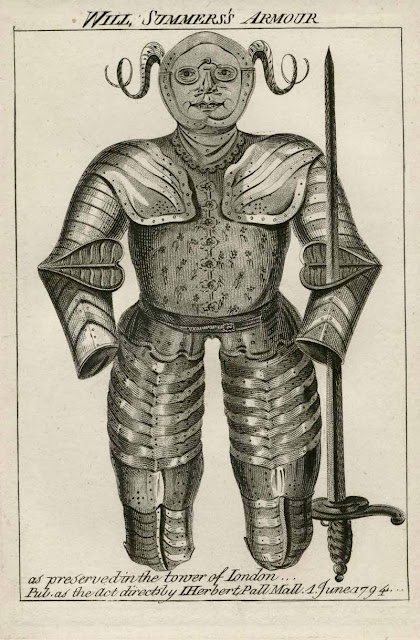The horned helmet dates from 1511–14 (Austria, Innsbruck). This helmet originally formed part of the court armour of Holy Roman Emperor Maximilian I and was made by Konrad Seusenhofer. Holy Roman Emperor Maximilian I presented Henry VIII
with the armour that included this extraordinary ‘Horned helmet’ in
1514. This helmet was chosen as the symbol of the Royal Armouries in
Leeds because of its extraordinary appearance and association with Henry
VIII.
The full armour from which the ‘Horned helmet’ originates was one of three of similar design. Only the armour given by Maximilian I to his grandson, the future Emperor Charles V, survives intact and it is now in Vienna.
The rest of Henry VIII’s armour no longer survives and for some time after Henry’s death this helmet was believed to have belonged to his jester or fool, Will Somers, because of its unusual nature.
Konrad Seusenhofer, the maker of Henry VIII’s gift armour, was one of the leading armourers of the early 16th century. The ‘dragon’ hinges, left and right, suggest that alternative face defences were also supplied. It was made for use in pageants rather than for combat. Henry VIII might have worn it at sumptuous events such as the parades that accompanied tournaments.
The full armour from which the ‘Horned helmet’ originates was one of three of similar design. Only the armour given by Maximilian I to his grandson, the future Emperor Charles V, survives intact and it is now in Vienna.
The rest of Henry VIII’s armour no longer survives and for some time after Henry’s death this helmet was believed to have belonged to his jester or fool, Will Somers, because of its unusual nature.
Konrad Seusenhofer, the maker of Henry VIII’s gift armour, was one of the leading armourers of the early 16th century. The ‘dragon’ hinges, left and right, suggest that alternative face defences were also supplied. It was made for use in pageants rather than for combat. Henry VIII might have worn it at sumptuous events such as the parades that accompanied tournaments.
The ‘Horned helmet’ is technically called an armet, with
protection for the skull, hinged cheekpieces and a face defence. Over
the skull of the helmet can be seen sunken bands and rivet-holes for
securing the now lost silver-gilt pierced panels that were originally
placed over rich velvet cloth.
The craftsmanship of this armour set new standards which Henry was keen to match.
As well as importing fine armour from Europe, Henry recruited some of the best armourers from Germany, Flanders and Italy to come to England and work for him at the workshop he established at his palace at Greenwich. Armour was produced at Greenwich for Tudor and Stuart rulers, the workshop finally closing in the mid-17th century.



Interesting info. Thanks.
ReplyDeletehi
ReplyDeleteThere,
Thank you for sharing a knowledgeable blog with us I hope that you will post many more blog with us:
The need of Medieval armour in 21st century is figured out in historical events, drama, shows, casting of tv serials, and many other similar occasions. If you’re looking to cast a show where dressing up like a real medieval knight is the need of hours, here is the right suggestion. Indian Medieval armour is an online store of real Medieval armour. We have special Medieval armour for sale Germany discounts for those who want to order them in bulk.
Click here: Medieval Armour For Sale